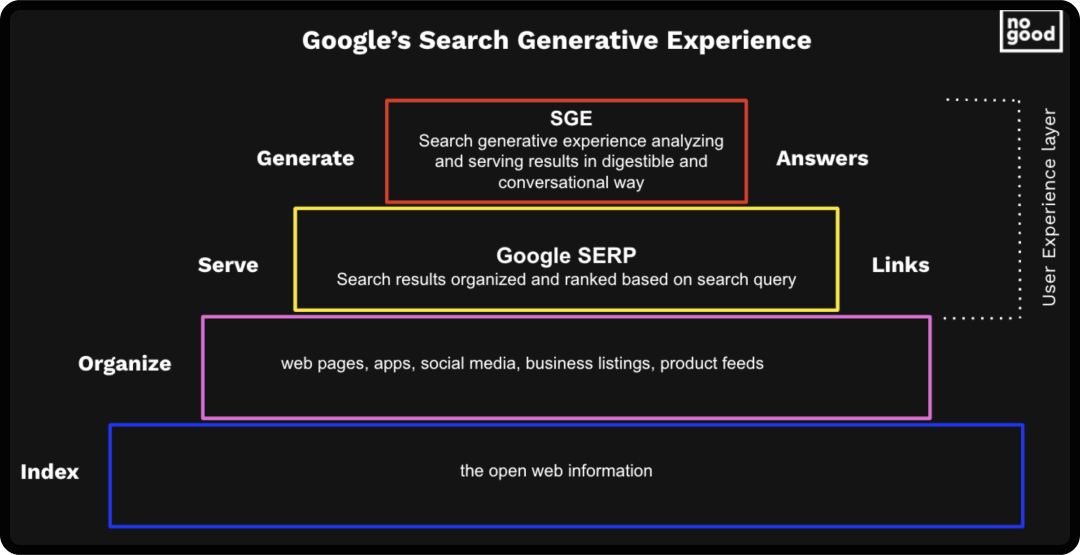Amazon is falling behind in the AI race - can Alexa be their saving grace?
📰 NoGood News | Vol. 69
Hi NoGoodies,
Before we jump into another round of the NoGood News, here's a quick TL;DR of what's below:
Amazon is falling behind in the AI race
Here’s how Alexa could be their saving grace to catch them up
Google’s AI Overviews have serious implications for marketers
Learn how Gen AI is changing how users find information online
Gen Z is initiating a paradigm shift to decentralized social media
Amazon is falling behind in the AI race
Here’s how Alexa could be their saving grace to catch them up
Google and Open AI have transformed how users find and interact with information online.
If Amazon doesn't act quickly, these new chatbots with advanced two-way communication will push Alexa into obscurity.
Alexa must be redesigned to compete with Gemini and ChatGPT’s new AEO and voice search capabilities.
Since Alexa already has millions of users, this is a chance for Amazon to easily convert their existing customers to their new Gen AI chatbot.
Do you think Alexa can compete with Gemini and ChatGPT?
Google’s AI Overviews have serious implications for marketers
Learn how Gen AI is changing how users find information online
Google AI uses advanced models that understand context and semantics better than previous algorithms.
As a result, quality and depth of content have become more critical than simply matching keywords.
How Google AI Influences SEO Practices:
Keyword Optimization: Keyword stuffing or simplistic keyword strategies are less effective — focus on creating content that naturally incorporates keywords in a meaningful context
Content Quality: High-quality content that is informative, well-structured, and authoritative is more likely to be featured in AI-generated summaries.
User Experience: Factors like page load speed, mobile-friendliness, and overall site usability are critical in ranking. Google’s AI evaluates user engagement metrics to determine the quality of the user experience.
Zero-Click Experiences: Users find the information they need without leaving the SERPs due to Google’s advancements — optimize for featured snippets, knowledge panels, and other rich results that AI tends to populate with direct answers.
Head to our blog to learn more about AEO and how to optimize your blog to be featured in Google AI overviews.
Gen Z is initiating a paradigm shift to decentralized social media
Discover how marketers can prepare for the new digital space
The Fediverse is a decentralized network of interconnected social media platforms that share compatible protocols, allowing users to communicate seamlessly across different services.
This digital space differs from the metaverse and Web3 in that it combines virtual reality, augmented reality, and the Internet, creating a shared space for socializing, gaming, commerce, and more.
So, where do marketers come in?
With decentralized social media, the absence of a central company calling the shots means there is no mechanism and no incentive to drive ad revenue.
This means that brands can use the Fediverse as an environment to engage consumers through organic content and get a better return on investment than paid ads.
The future of decentralized social media is promising, especially considering its potential to create a space where brands and users would no longer be beholden to today’s social media giants like TikTok and Twitter.
Head to our blog to learn more about how decentralized social media will affect marketers.
🎙️Q&A with an expert
A bi-weekly interview series with the best in the game
Q: How has CTV advertising changed in the recent years?
A: CTV started as a channel advertisers pushed media through to achieve traditional brand awareness, but it has since been transformed to serve full-funnel strategies. Recent developments have been very exciting because they highlight the maturation a media distribution avenue can take as it responds to shifts in the overall industry.
Attribution in digital marketing has become a difficult hurdle to jump over, but it has actually created an opportunity for marketers to practice evergreen ideals like strong storytelling and persuasive techniques -- strategies that often weren't prioritized during the "golden age" of data-driven online advertising.
Q: How are brands rethinking their CTV strategies as the channel matures?
A: CTV isn't just a channel to run video ads you want people to remember. Growing technologies and options have allowed marketers to create engagement and other intent-based actions from these campaigns. For example, marketers now place QR codes directly in the creative ads running via CTV, encouraging users to sign up, purchase, etc.
Some CTV providers have display networks as part of their built-in retargeting strategy. Marketers can retarget users on their phones or tablets after viewing an ad on their TVs. This means clever marketers can position CTV as a reliable source of action and not just impressions - something that was the norm in the traditional approach to TV ads. There are many creative ways CTV can be used as more than just a brand awareness avenue, and we should see more growth tactics coming out of this channel as it continues to get more usage from marketers.
✍️ We wish we wrote this
A curated list of the past 2 weeks’ must-read articles:
YouTube partners with Shopify to create an in-app e-commerce experience
Spotify’s rebrand takes inspiration from various schools of typography to break away from traditional typographic conventions
Google’s Search API Docs were leaked — Here’s what you need to know about it
👀 Keeping up on the socials
Because we know you like to stay in the know:
Crocs taps into cultural moments to revitalize their legacy for younger generations
Ranking Bridgerton brand collabs based on how much they actually make sense





